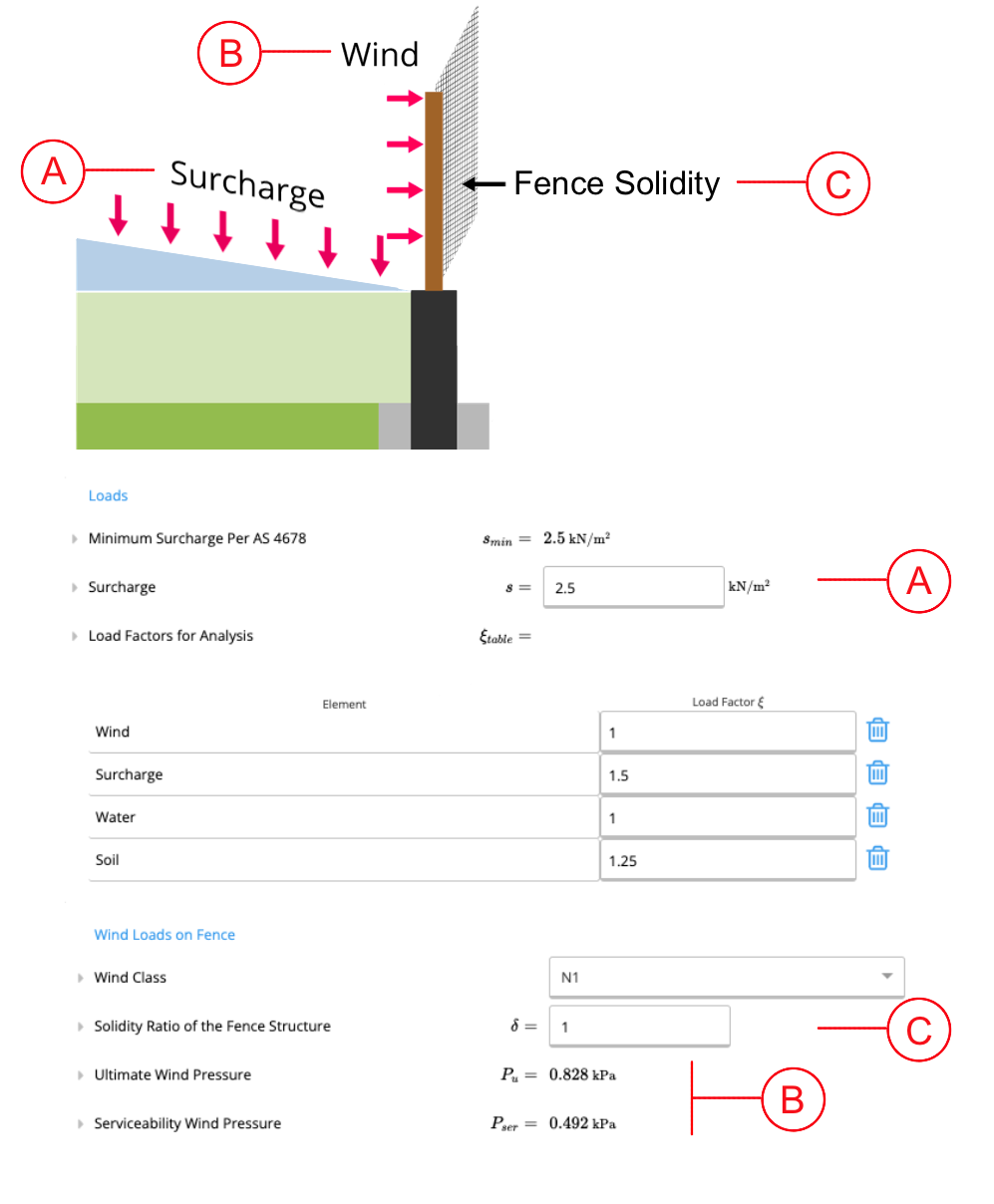- Are you embedding the steel post into an in-situ concrete pile of less than 5m length?
- Are the surcharge loads predominantly static (i.e. no earthquake or frequent traffic loads expected)
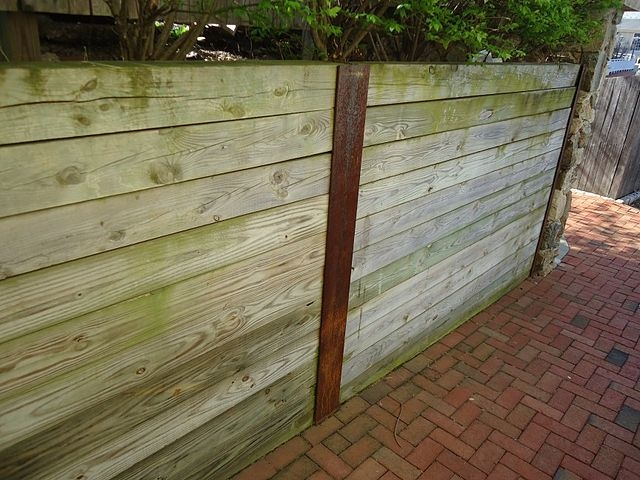
1. How to Enter RW Geometry?
The geometry inputs are used to determine the loading applied to the structure, as well as its ability to support those loads. This includes:- Retained Soil Force applied over the retained height
- Wind Force applied over the fence height (reduced when fence is permeable e.g. wire-mesh)
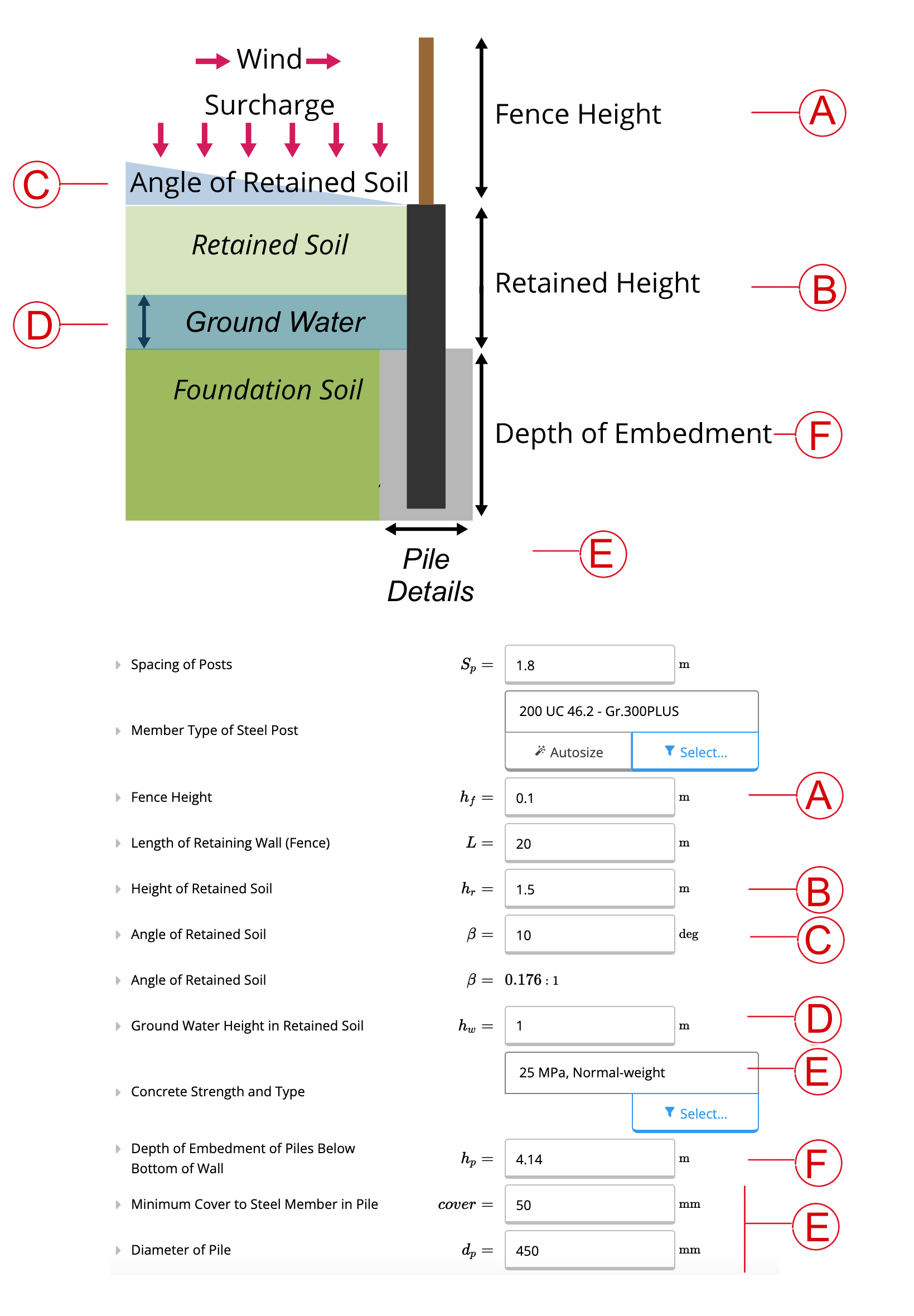
2. How to Determine Retained Soil Properties?
The retained soil properties are used to determine the pressure that the earth applies to the sleeper portion of the wall. This includes:- Angle of Friction - Guidelines are available for typical soils. Some typical values are available at https://www.geotechdata.info/parameter/angle-of-friction
- Unit Weight of Soil - Majority of soils (clay / sand) are 18 kN/m3, so no change is generally required
- Retained Soil Condition - Is the fill imported and meeting consistency values? AS 4678 uses this categorisation, as some types of fills (e.g. uncontrolled) may have greater variation in properties. Expand the label to see what factors are used out of Table 5.1 (A).
- Characteristic Effective Cohesion of Retained Soil (** See NOTE below) - It is used to reduce the earth pressure. Some values are available when expanding the description.

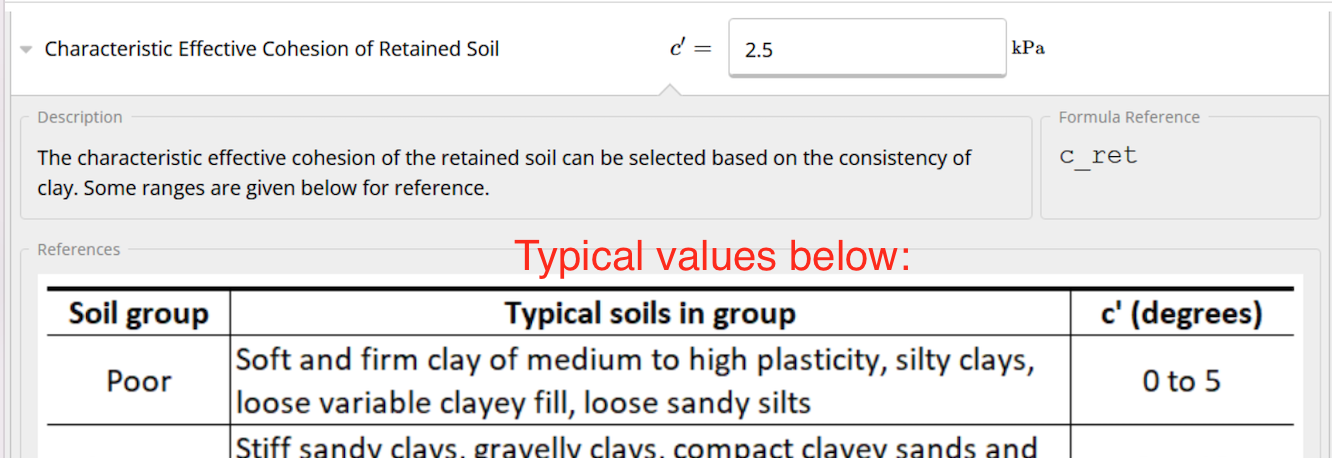 ** NOTE: Retained Soil Cohesion - Engineering judgement required when taking into account the cohesion of retained soils for calculating active earth pressure. It is advised to only use c’ > 0 when:
** NOTE: Retained Soil Cohesion - Engineering judgement required when taking into account the cohesion of retained soils for calculating active earth pressure. It is advised to only use c’ > 0 when:
- The retaining wall is supporting an undisturbed soil (not a fill material);
- The soil exhibits considerable reliable cohesion;
- The structure includes an impermeable surface membrane and drainage system, such that any water does not enter or can quickly get drained out from the retained soil.
3. How to Determine Pile Soil Properties?
- Undrained Shear Strength of Foundation Soil (Undrained Cohesion): This is usually referred to as Su or Cu. Refer to ‘Section 5 - Theory Background’ below to see how this is used to calculate pile capacity. Some values are available when expanding the description.
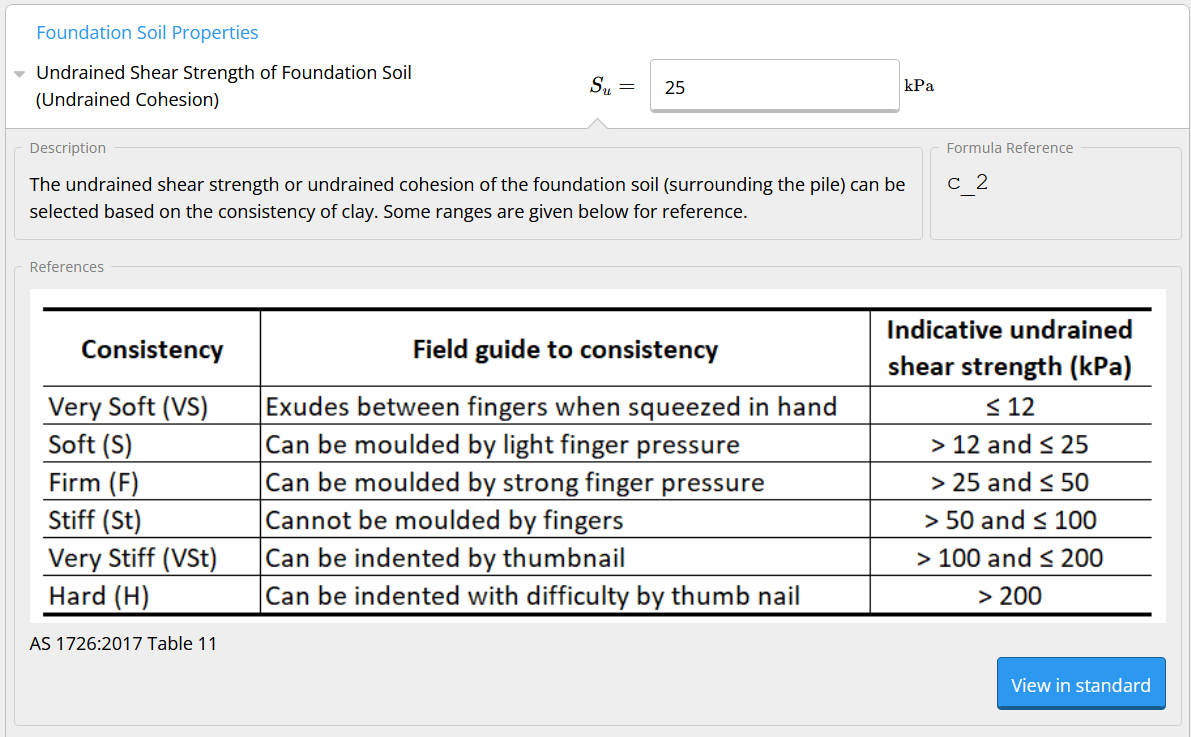
- Foundation of Soil Condition - As for retained soil, AS 4678 uses this as some types of fills (e.g. uncontrolled) may have greater variation in properties. Expand the label to see what factors are used out of Table 5.1 (A).
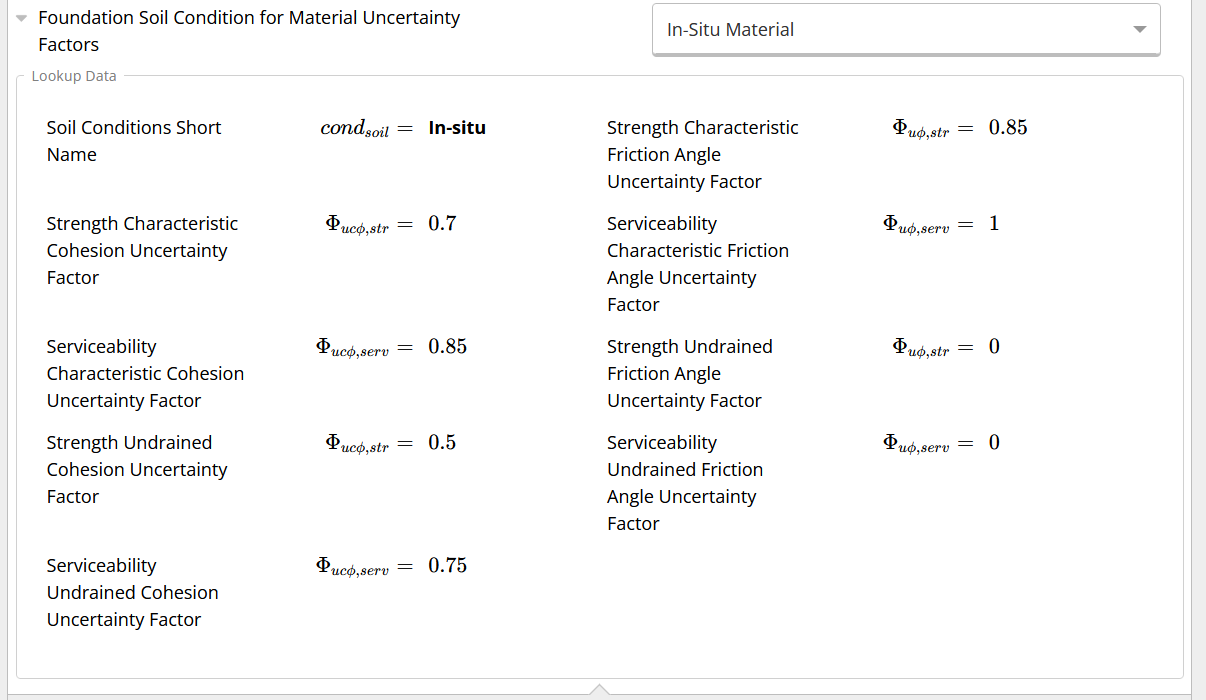
- Coefficient of Horizontal Subgrade - This is the amount the soil deforms when pressure is applied. This input becomes visible only if you are checking for pile deflection. Typical values may be obtained from literature. An example of values are available here Geoengineer - horizontal-soil-subgrade-reaction-in-pile-foundations
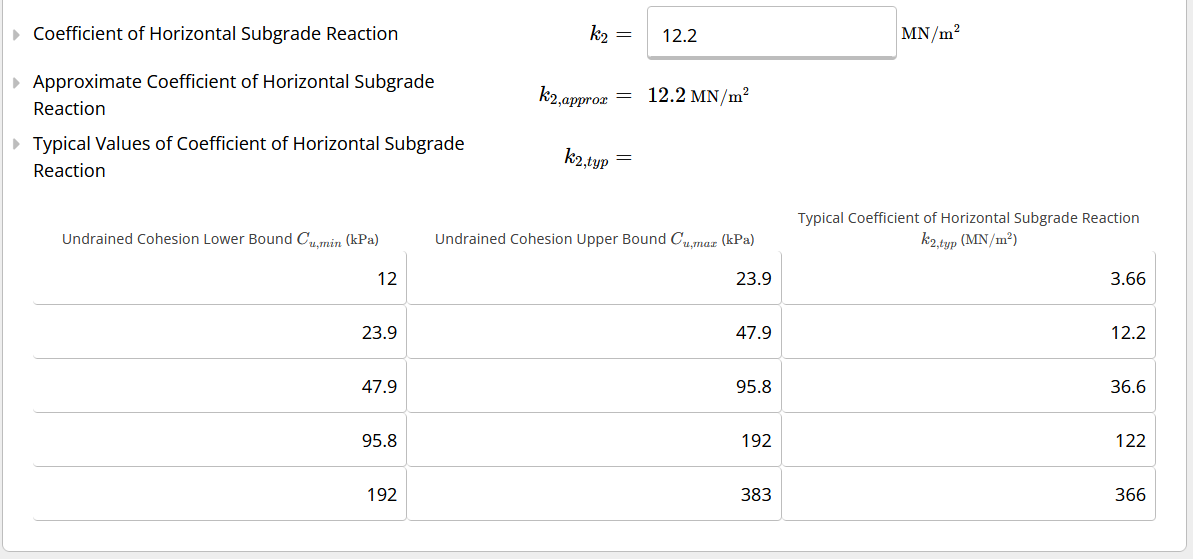
4. How to input loads
The sleepers spanning between the wall will take active pressure from backfill. In addition, the fence will attract wind load that transfers through to the steel posts. The pressure will result in a total horizontal force Vu acting with an effective lever arm or eccentricity (e) above ground level (top of pile). The post transfers a horizontal force (Vu) and a moment (Mu=Vu × e) per spacing acting on the pile. The weight of the wall will also result in an axial force (Pu) acting vertically on the pile. Only a few additional load inputs are needed such as wind, surcharge to finalise the design inputs, as shown below. The remainder is automatically calculated based on the geometry and spacing of the structure.5. Theoretical Background
For the analysis of loads from backfill (retained soil), ClearCalcs calculates the Coefficient of Active Earth Pressure in accordance with Appendix E – Figure E2 for both cohesive and granular soils (pictured below).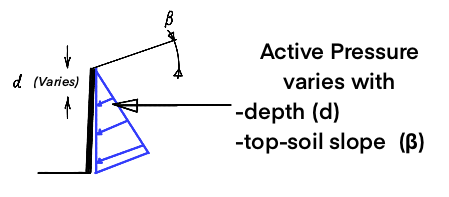 To calculate the minimum embedment of the pile, ClearCalcs uses an analytical method both for the strength and deflection of short rigid piles. This method was originally developed by Broms, but has been improved and refined, and is detailed in the book “Pile Design and Construction Practice - M.J. Tomlinson, Fourth Edition”. It provides an empirically derived Ultimate Lateral Resistance under the following conditions:
To calculate the minimum embedment of the pile, ClearCalcs uses an analytical method both for the strength and deflection of short rigid piles. This method was originally developed by Broms, but has been improved and refined, and is detailed in the book “Pile Design and Construction Practice - M.J. Tomlinson, Fourth Edition”. It provides an empirically derived Ultimate Lateral Resistance under the following conditions:
- Top of pile is allowed to rotate (generally applicable for all sleeper retaining walls)
- Pile is embedded into a single type of cohesive soil
- A constant lateral spring stiffness can be assumed for the soil (also known as Coefficient of Horizontal Subgrade Reaction)
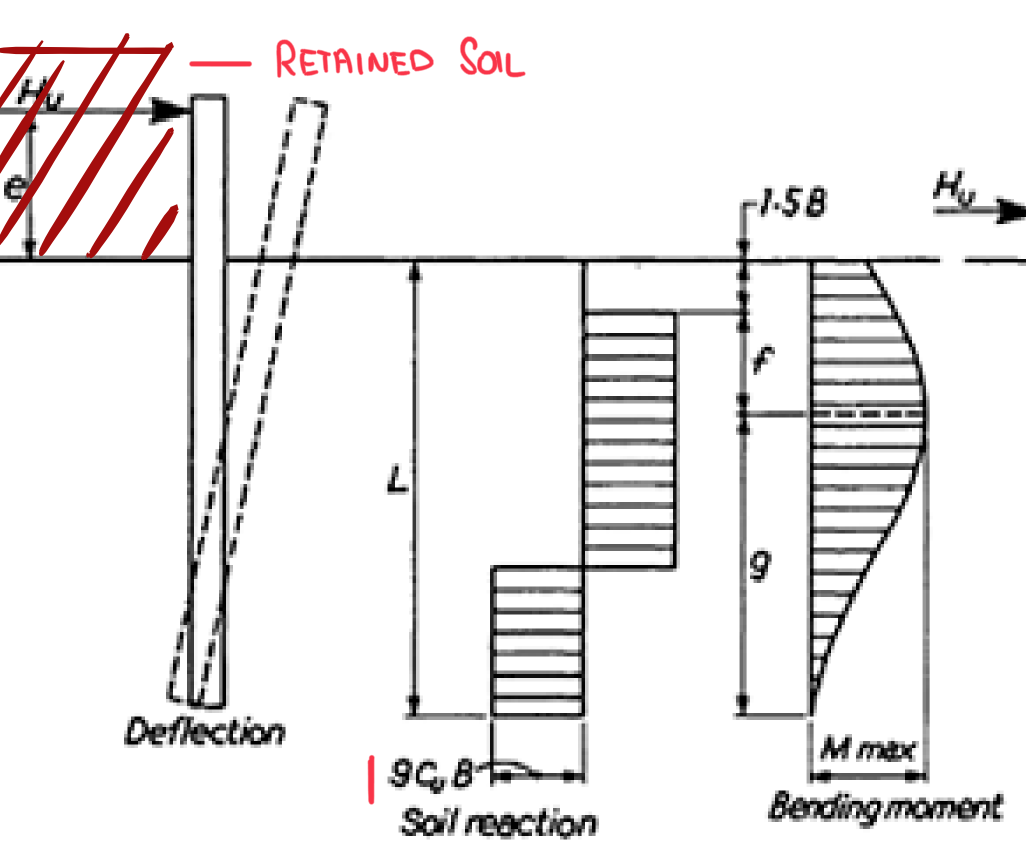 Calculated distances shown in ClearCalcs.
Calculated distances shown in ClearCalcs.
 The minimum depth of embedment is established by equating the Vu to total lateral resistance. Specific to the above diagram, the minimum depth of embedment is calculated as hp,min = g+f+1.5⋅dp. ClearCalcs will default hp to hp,min unless specifically overridden.
The minimum depth of embedment is established by equating the Vu to total lateral resistance. Specific to the above diagram, the minimum depth of embedment is calculated as hp,min = g+f+1.5⋅dp. ClearCalcs will default hp to hp,min unless specifically overridden.